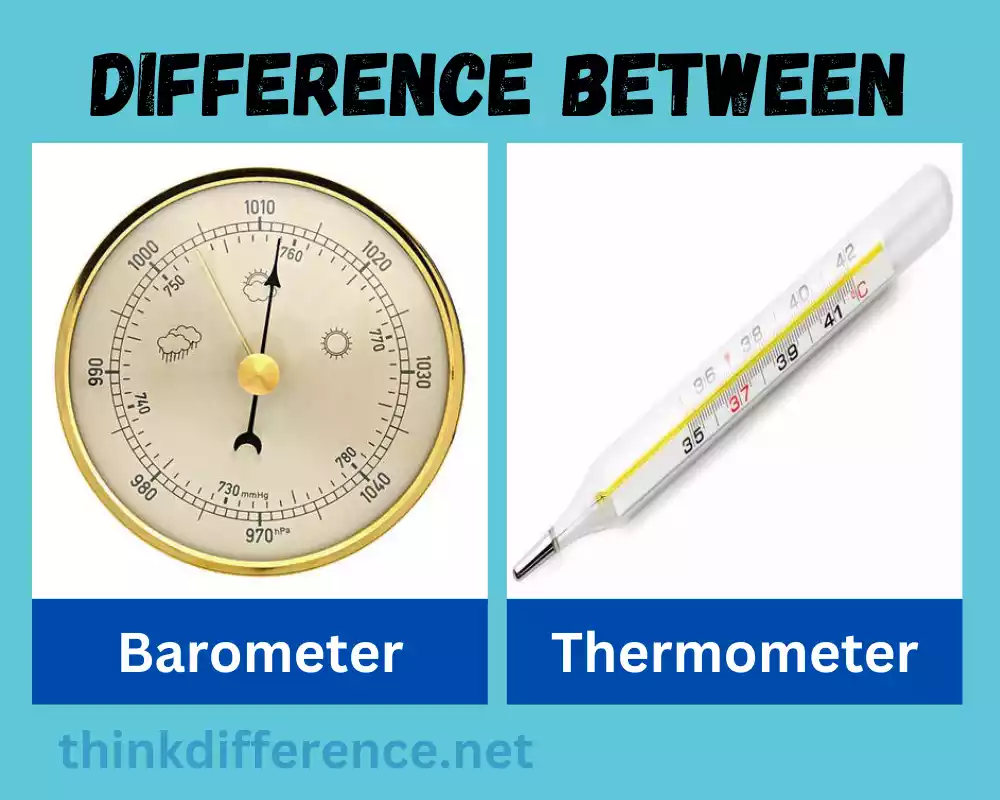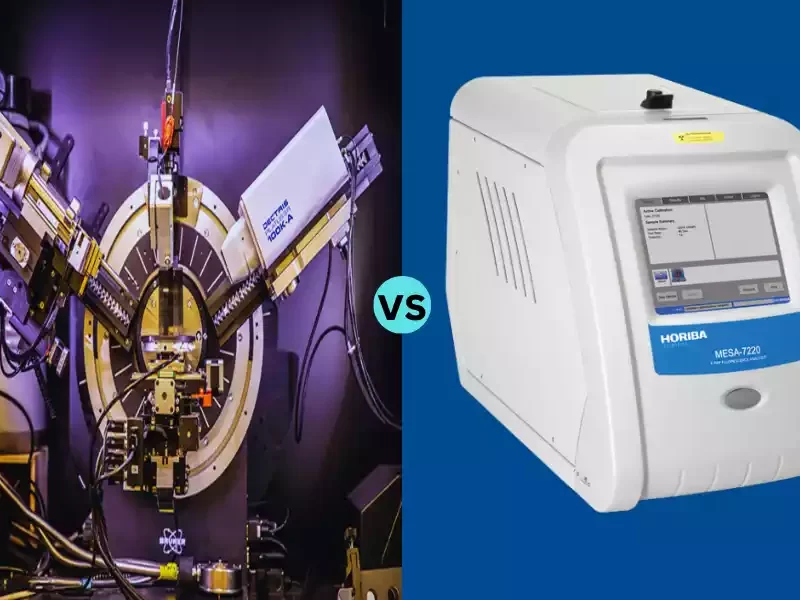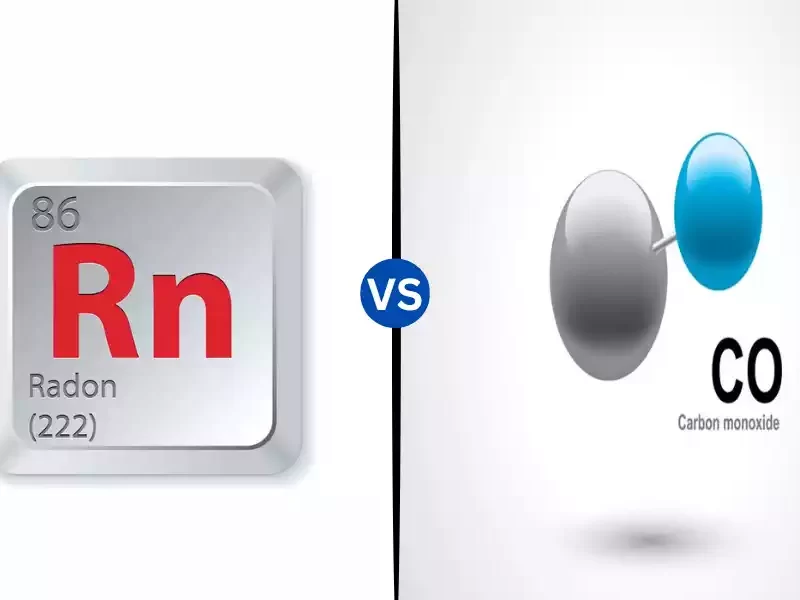Brief Overview of Barometer and Thermometer
Barometers and thermometers can both be utilized as methods to accurately assess different aspects of atmospheric conditions.
A barometer measures atmospheric pressure – the force exerted by air molecules on Earth – to forecast weather and determine weather patterns. There are various kinds of barometers including mercury barometers and aneroid barometers; they work on different principles but all measure atmospheric pressure using inches of mercury (inHg) or millibars as measurement units.
A thermometer is an instrument used to accurately determine the temperature of substances and measure particle kinetic energies, monitoring environmental conditions or industrial processes. There are various kinds of thermometers including mercury-in-glass thermometers and alcohol thermometers; digital or infrared temperature meters also exist – temperatures are usually measured in Celsius degrees (degC), Fahrenheit degrees (deg F), or Kelvin units.
Barometers and thermometers both serve as measuring instruments, they have different purposes and work on differing principles. Barometers measure atmospheric pressure to gain insights into weather conditions, navigation and altitude while thermometers use temperature measurement for various applications including health monitoring, industrial processes, and environmental protection monitoring.
Importance of Barometer and Thermometer
Each barometer and thermometer has its advantages that make them useful tools in many fields of operation. Both barometers and thermometers play key roles for various reasons including:
Importance of Barometers:
- Weather Forecasting: Barometers play an invaluable role in weather forecasting by measuring atmospheric pressure. Meteorologists can predict weather conditions using this measure of atmospheric pressure measurement.
- Aviation and Marine Navigation: Barometers are essential tools in aviation and maritime navigation, enabling pilots and sailors to calculate altitudes accurately, navigate safely through difficult waters, measure air pressure differentials accurately, assess weather forecasts accurately, make informed decisions to prevent dangerous weather situations or situations and keep themselves out of hazardous waters.
- Altitude Measurement: Barometers can be an accurate way to gauge altitude when mountaineering or aviation are involved. Barometric readings help calculate estimated altitude or height above sea level since atmospheric pressure decreases with increasing altitude – providing navigation, surveying, and outdoor recreation with invaluable data.
- Understanding Atmospheric Conditions: Barometers Are An Essential Tool For Analyzing Atmospheric Conditions: Scientists use barometers as an essential way of monitoring atmospheric conditions over time, such as climate patterns. Scientists can better comprehend weather systems and atmospheric dynamics by continuously tracking pressure readings over time.
Importance of Thermometers:
- Healthcare and Medical Applications: Thermometers play an invaluable role in healthcare. By accurately measuring body temperatures, thermometers help healthcare practitioners accurately diagnose illness and monitor health conditions as well as guide medical treatments. Thermometers play an integral part in detecting fever which is an indicator for various diseases.
- Industrial Processes: Thermometers play an invaluable role in controlling and monitoring industrial temperatures for quality assurance purposes during manufacturing, chemical reaction, or food processing processes. By maintaining specific temperatures they ensure proper functioning in manufacturing, chemical processing and food handling operations as well as quality assurance measures.
- Environmental Monitoring: Thermometers can be used to track temperatures within natural ecosystems and measure ambient temperatures, helping researchers gain a better understanding of climate change’s effect on biodiversity, ecological systems, and the climate.
- Comfort and Energy Efficiency: Thermometers can help maintain comfortable living environments while optimizing energy efficiency in homes and buildings by measuring indoor temperatures accurately and providing accurate reports.
- Scientific Research: Thermometers play an essential part in all forms of scientific research. With accurate temperature readings for lab work, experiments, and studies – they supply crucial data that inform analyses and conclusions drawn.
Barometers and thermometers provide accurate measures of atmospheric pressure and temperature for use in meteorology, navigation, and healthcare settings. They have become essential tools in these industries.
What is Barometer?
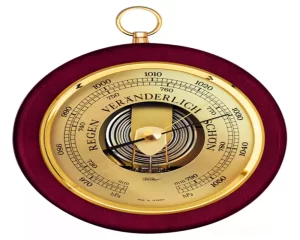
Barometers are devices used to gauge atmospheric pressure. Atmospheric pressure measures the weight of air exerted above certain locations; barometers can be useful tools in meteorology, forecasting, and other fields where atmospheric pressure plays a vital role.
Barometers’ primary role is to monitor changes in atmospheric pressure. Meteorologists use barometric readings as data points on weather changes or variations; using it they can accurately forecast weather patterns or spot seasonal variations, detect high- and low-pressure system formation, anticipate storm arrival, and analyze wind patterns.
There are various kinds of barometers, but among the most widely used are aneroid, mercury, and digital barometers:
- Mercury Barometer: Mercury barometers are classic barometers consisting of glass tubes filled with mercury that have been inverted over a dish to measure atmospheric pressure changes; their mercury column height varies as atmospheric pressure changes so as atmospheric pressure rises mercury will rise and vice versa.
- An Aneroid Barometer: Instead of using mercury as its indicator fluid, an aneroid barometer utilizes metal-sealed chambers called aneroid cells instead. As atmospheric pressure fluctuates, an aneroid cell expands or contracts according to atmospheric changes; its movement linked with an expand/contract mechanism displays pressure readings on a calibrated gauge.
- Digital Barometers: Thanks to modern technological developments, digital barometers are now readily available. These barometers directly measure atmospheric pressure using electronic sensors which convert pressure changes into electrical signals – this signal then displays digital readings on screen as digital readings.
Barometric pressure (typically measured in millibars or inches of mercury, inHg) is frequently used as an analogy for standard atmospheric pressure at sea level.
Barometers serve an assortment of uses, from weather forecasting and aviation navigation to altitude measurements. Barometers play an integral part in understanding weather trends as well as maintaining safety for air and maritime travel; in turn providing meteorologists, sailors, and pilots with valuable insight.
What is a Thermometer?

Temperature measurement devices such as thermometers provide accurate results in various settings, from daily home usage and scientific research, to industrial uses and beyond. Thermometers come in handy in everyday and professional situations alike – as their readings demonstrate average kinetic energies of particles in an object or environment. Across different settings, a thermometer may be found being used.
A thermometer’s main function is to accurately measure temperature. By monitoring changes and understanding thermal conditions, this tool enables us to keep tabs on changes as they occur and make informed decisions based on accurate readings.
Different thermometers utilize various mechanisms to accurately measure temperature:
- Mercury-in-Glass Thermometer: This thermometer consists of a glass tube filled with mercury. As temperature fluctuations occur, mercury expands and contracts according to changes within its surroundings and rises or falls within its tube as measured against an accurate scale that measures its length.
- Alcohol Thermometer: Similar to mercury thermometers, an alcohol thermometer measures temperature using a colored liquid such as ethanol or other organic compounds as the medium for temperature measurement. Readings are determined by expanding and contracting movements within this liquid as temperatures change; temperature readings are determined through expansion/contraction analysis about temperature change.
- Digital Thermometers: Digital thermometers utilize digital electronic sensors and thermistors to measure temperature. These sensors detect changes in electrical resistance or power caused by temperature-induced variations, then display that data digitally as digital readings on computer screens.
- Infrared Thermometers: Infrared devices are non-contact thermometers that measure temperatures without physical contact between objects and thermometers, turning infrared radiation into temperature readings by measuring and detecting it. They’re best used when contact measurements are not feasible or desirable, such as when you need accurate readings without being subject to physical contact from another thermometer.
Temperature can be measured using various scales:
- Celsius (degC): The Celsius scale measures the freezing and boiling temperatures of water; zero degrees represents freezing temperature while 100degC signifies boiling at standard atmospheric pressure.
- Fahrenheit (deg F): Fahrenheit is the temperature scale most frequently employed in the United States and includes freezing and boiling temperatures of water at standard atmospheric pressure; 32degF represents freezing while 212degF represents boiling temperature.
- Kelvin scale (K): measures absolute temperatures that start from absolute zero, where molecular movement ceases. Used widely in science research and calculations.
Thermometers serve many important functions in healthcare settings and industrial operations alike; from monitoring body temperatures to controlling temperatures in industrial processes and measuring environmental temperatures. Their wide array of uses makes the thermometer an indispensable piece of technology in many fields of application.
Differences between Barometer and Thermometer
Both thermometers and barometers serve to measure temperatures; however, their design differs significantly, here are the major distinctions:
Purpose:
- Barometer: Barometers measure atmospheric pressure to provide information on weather patterns, navigation, altitude, and altitude differences, etc.
- Thermometers: Thermometers measure environmental temperatures such as substances or environments to give insight into whether things are too warm or cool compared with their norm.
Measurement Principle:
- Barometer: A barometer measures atmospheric pressure changes as altitude rises or drops. Pressure will usually drop with increasing altitude.
- Thermometers: Thermometers are commonly used to accurately monitor temperature variations. They do this by tracking changes in materials like mercury, alcohol, or electronic sensors as they expand or contract when exposed to temperature variations.
Units of Measurement:
- Barometer: Atmospheric pressure can be measured using units like inches of mercury (inHg), millibars, or hectopascals.
- Thermometers: Thermometers measure temperature using either Celsius (degC), Fahrenheit degrees (deg F), or Kelvin degrees (K).
Types Available:
- Barometer: There are various kinds of barometers, from mercury barometers and aneroid barometers, that use various mechanisms to measure atmospheric tension.
- Thermometers: There are also different kinds of thermometers, including mercury-in glass thermometers and alcohol thermometers; digital thermometers; infrared temperature thermometers are also widely available, each type providing its specific working principle and application.
Applications and Usage:
- Barometers: They’re used in meteorology to predict weather forecasting, aviation navigation and maritime travel safety, altitude measurement, and altitude estimation. Barometers play an essential part in understanding and forecasting weather and ensuring travelers’ travel is as safe as possible.
- Thermometers: Thermometers serve an assortment of uses, from monitoring body temperatures in healthcare to controlling temperatures during industrial processes and monitoring environmental conditions or conducting scientific research.
A barometer and thermometer differ significantly when it comes to their purpose and parameters of measurement; respectively atmospheric pressure for one, and temperature for the other. Both types have unique units of measure as well as differing operating principles – and may find use across many fields.
Similarities between Barometers and Thermometers
Though barometers and thermometers measure atmospheric pressure differently, both instruments share some similarities:
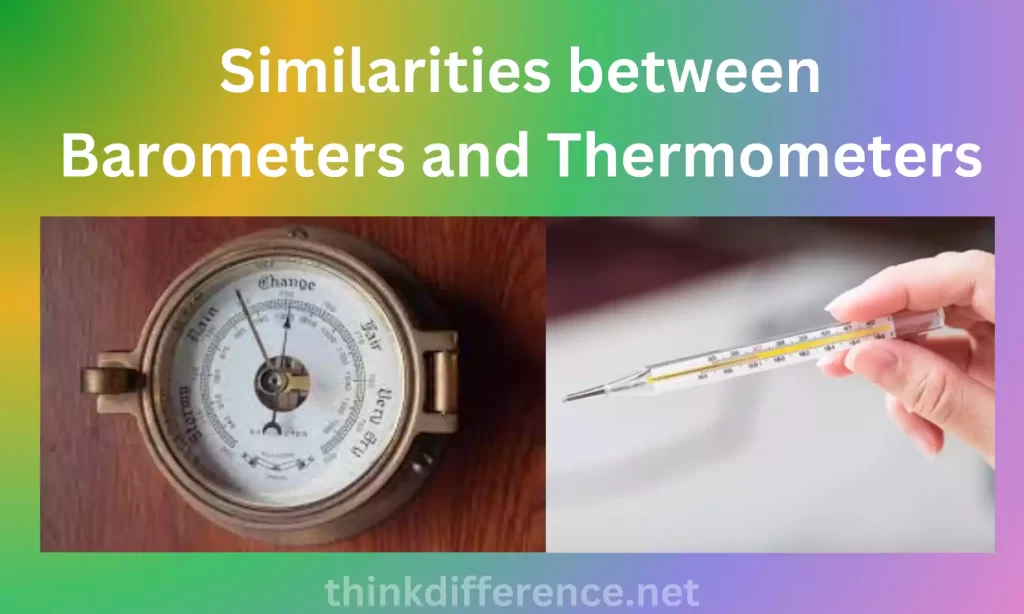
- Measurement Devices: Barometers and thermometers both serve as measurement devices that help quantify specific physical properties. Barometers and thermometers offer precise data about atmospheric conditions or temperatures within objects or environments.
- Calibration: Both instruments must be calibrated correctly to produce accurate measurements. Calibration involves comparing readings from an instrument with those obtained from standard or reference materials and making any necessary corrections if discrepancies exist.
- History: Barometers and thermometers both boast long histories that date back centuries, having played an invaluable role in science’s advancement. Researchers, meteorologists, and other professionals alike have used barometers and thermometers extensively over time in collecting data about atmospheric conditions while making informed decisions – just a glimpse of their history is all it takes!
- Instrument Variations: Barometers and thermometers come in an assortment of types and designs to fit different applications and purposes. There are aneroid, mercury, and digital barometers; additionally, there are alcohol mercury glass digital infrared thermometers that offer additional measurements of temperature or pressure.
- Units of Measurement: Though barometers and thermometers use differing units (Fahrenheit or Celsius), both instruments measure physical properties in similar ways.
- Instrument Maintenance: Barometers and thermometers require regular upkeep to remain accurate and durable, including regular cleaning, calibration checks, and protection from extreme environments. Keep instruments performing optimally they should also undergo periodic repairs if they experience damage in extreme climate conditions.
Keep in mind that, while their functions and uses might seem similar, barometers and thermometers serve very distinct purposes and functions. A barometer measures atmospheric pressure while thermometers detect temperature.
Conclusion
Barometers and Thermometers are invaluable instruments that help us understand the world around us. While barometers focus on atmospheric pressure and weather predictions, thermometers provide critical temperature data for numerous applications. Both these instruments play a significant role in various fields, from meteorology to healthcare and everyday life.

